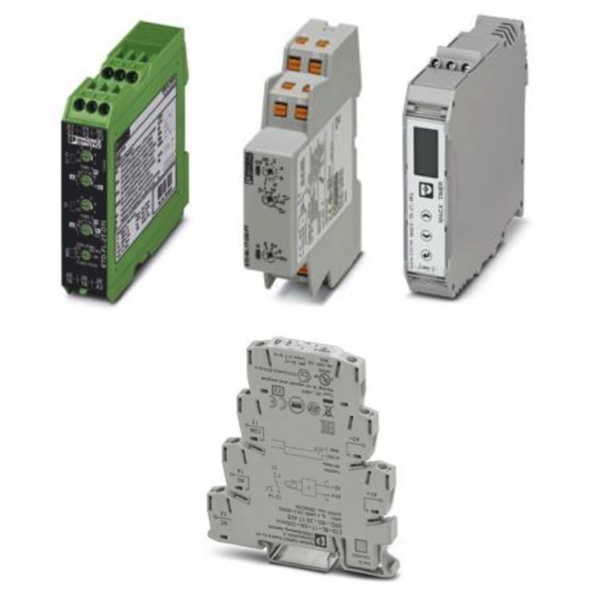Phoenix Contact Time Delay Relays

Phoenix Contact time delay relays are designed for precise and reliable time-based switching in industrial control and automation systems. These relays are commonly used in applications such as motor starting, load sequencing, lighting control, and system interlocking where delayed operation is required. Available in single and double pole configurations, they support flexible integration into control panels and machine designs.
Unlike standard control relays that switch immediately when voltage is applied or removed, time delay relays introduce a controlled delay before contact operation. On-delay timers initiate timing when voltage is applied and close contacts after the preset time expires, while off-delay timers maintain contact position for a defined period after the control input is removed. These functions help protect equipment, reduce inrush current, and coordinate system processes.
Phoenix Contact ETD-BL timer relays feature a compact housing for space-saving installation, making them well suited for building installations and series machine production. Time parameters are adjusted using front-mounted rotary switches, and integrated status LEDs provide clear visual diagnostics. Multifunctional ETD timer relays expand capability further with selectable time ranges, multiple timing functions, and dual changeover contacts for advanced control and selective system shutdown.
FAQs
Q: What is a time delay relay used for?
Time delay relays are used to introduce a delay in switching operations, commonly for motor starting, load control, sequencing, and equipment protection in industrial automation systems.
Q: What is the difference between on-delay and off-delay timers?
On-delay timers begin timing when voltage is applied and switch contacts after the set time expires. Off-delay timers switch contacts immediately when activated and begin timing when the control input is removed, switching back after the delay.
Q: Are Phoenix Contact time delay relays adjustable?
Yes, Phoenix Contact time delay relays feature adjustable time settings, typically configured using rotary switches on the front of the relay housing.
Q: What are ETD-BL timer relays designed for?
ETD-BL timer relays are compact and optimized for space-limited applications, such as building installations and series production machinery, while still offering versatile timing functions.
Q: Do Phoenix Contact multifunction timer relays support multiple outputs?
Yes, multifunction ETD timer relays are equipped with two changeover contact outputs and support multiple timing modes for flexible system control.
Why Buy Phoenix Contact Time Delay Relays from RSP Supply
RSP Supply offers a full selection of Phoenix Contact time delay relays in single and double pole configurations to support a wide range of industrial timing applications. Our lineup includes compact ETD-BL relays and multifunction ETD series models designed for reliable performance, easy adjustment, and clear diagnostics. Customers rely on RSP Supply for access to trusted automation components, technical product knowledge, and consistent availability for industrial control system needs.

